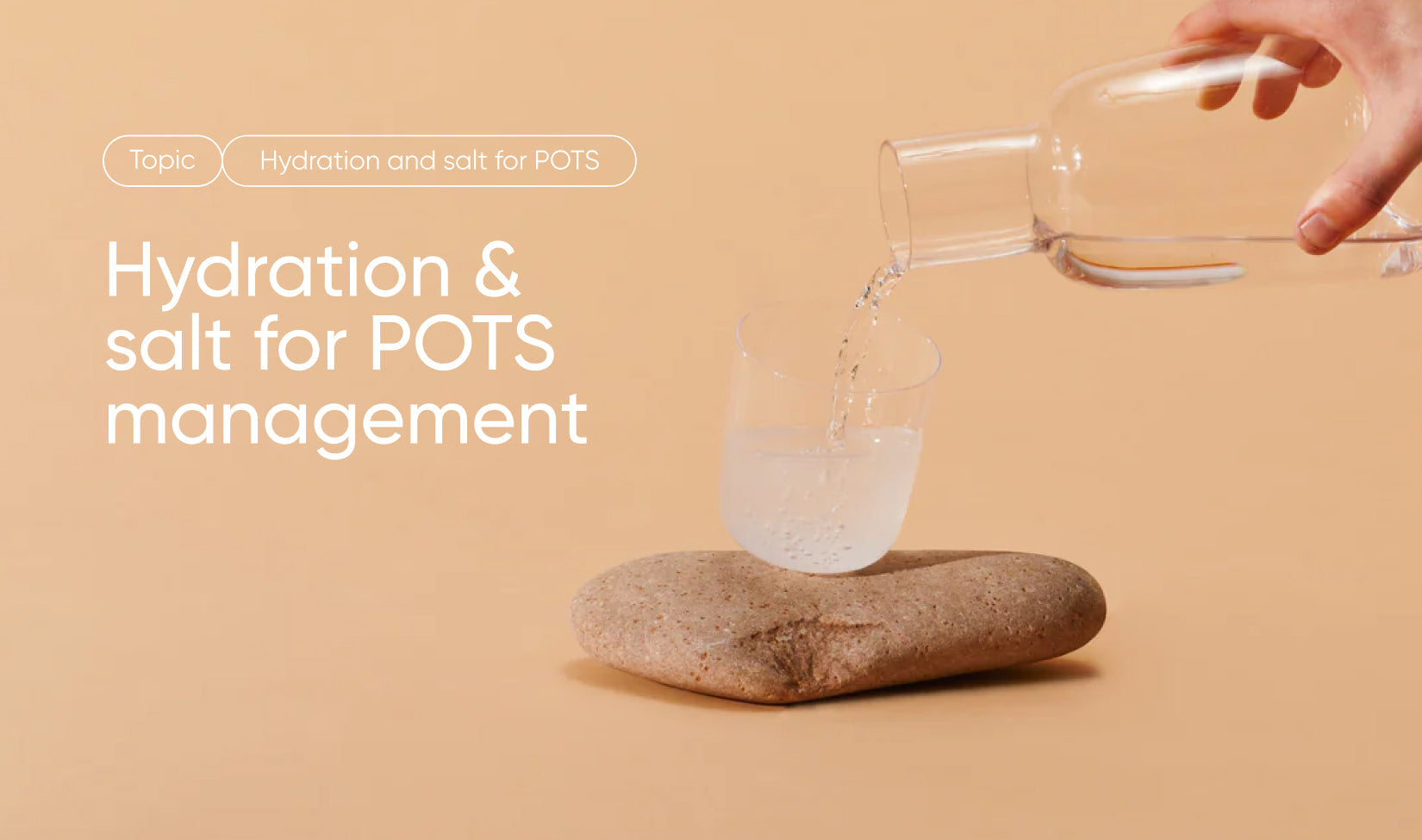So, what is POTS?
Postural Orthostatic Tachycardia Syndrome (POTS) is a condition that affects the autonomic nervous system, causing an abnormal increase in heart rate when transitioning from lying down to standing up. This leads to a variety of symptoms, including dizziness, fatigue, fainting, and heart palpitations. While POTS can be debilitating, understanding the role of hydration and salt intake can significantly aid in managing symptoms and improving the quality of life for those living with this condition.
The Role of Hydration in POTS Management
Proper hydration is a cornerstone of managing POTS. People with POTS often experience blood pooling in the lower extremities when standing, which can lead to reduced blood flow to the brain and cause dizziness or fainting. One of the main factors that contribute to this issue is low blood volume, which is common in POTS patients.
By staying well-hydrated, you help ensure that your body has enough fluid to maintain a higher blood volume, improving circulation and helping to prevent blood from pooling in the legs. This, in turn, can reduce the risk of symptoms like dizziness and fainting.
How Much Water Should You Drink?
The Canadian Cardiovascular Position Statement* recommends drinking at least 3-4 liters of water per day. However, individual needs may vary, and it's essential to monitor your body’s response to hydration. Some people may need more water, particularly if they are engaging in physical activity or are in hot weather conditions.
The Role of Salt in POTS Management
Salt plays a critical role in managing POTS due to its ability to increase blood volume. Sodium helps retain water in the body, which can increase blood volume and improve circulation. For individuals with POTS, this can lead to better symptom management by preventing blood from pooling in the legs and ensuring the brain receives adequate blood flow.
How Much Salt is Needed?
The Canadian Cardiovascular Position Statement* suggests that individuals with POTS should aim for a higher-than-normal salt intake, typically 10 grams of salt (or 4000 mg Sodium) per day, depending on individual tolerance. It’s important to note that the right amount of salt varies for each person. It is important to work closely with a medical provider to determine the appropriate level of salt intake.
For those who find it difficult to incorporate more salt into their diet, electrolyte drinks containing sodium may be beneficial. These drinks help to both hydrate and provide necessary salt to help manage POTS symptoms. However, be cautious about consuming too much sugar or artificial additives that may be present in some brands. Research demonstrates that carbohydrates and sugar consumption can worsen symptoms in POTS. This is where Sodii's Everyday Hydration Salts are a great fit.
Managing POTS isn’t just about hydration and salt, but research has shown that they’re two simple, science backed ways to help manage symptoms. Always remember to work with your healthcare provider to develop a personalised hydration and salt intake plan that works best for you.
If you or someone you know is struggling with POTS, consider reaching out to the Australian POTS Foundation for additional resources, support, and guidance on managing this condition. www.potsfoundation.org.au
*The Canadian Cardiovascular Society Position Statement on POTS is the most comprehensive resource on the condition and is open access, meaning you can freely access and review the latest guidelines and recommendations on diagnosis, treatment, and management of POTS. You can find the statement link on the Australian POTS Foundation Website https://potsfoundation.org.au/the-knowledge-hub
